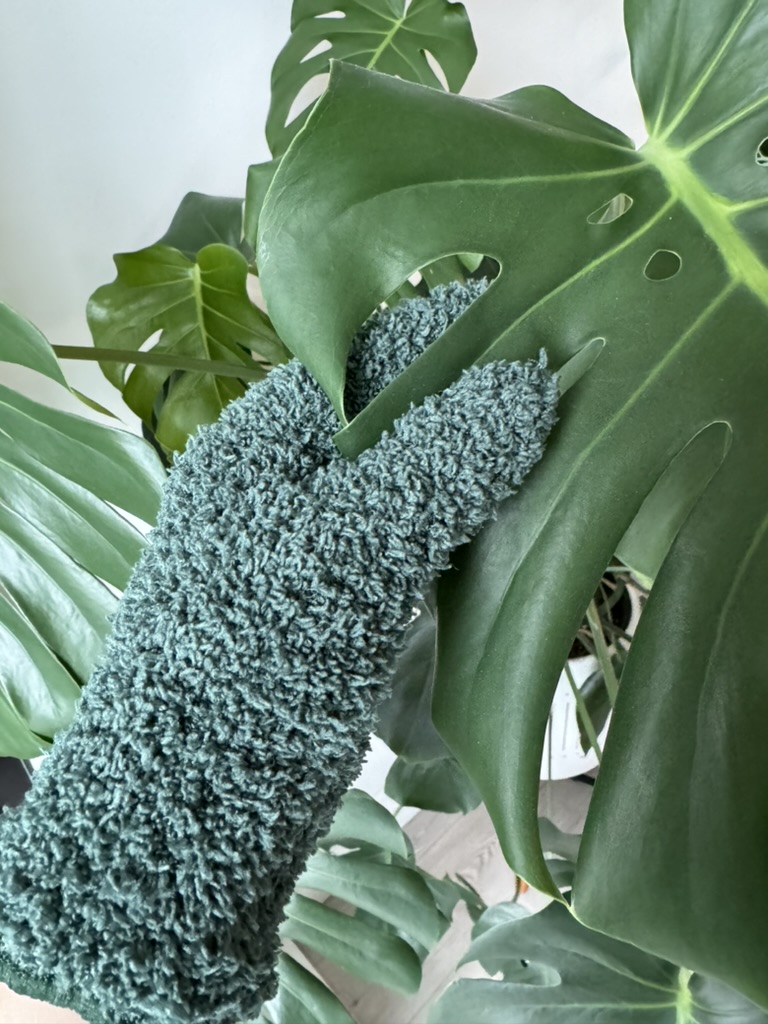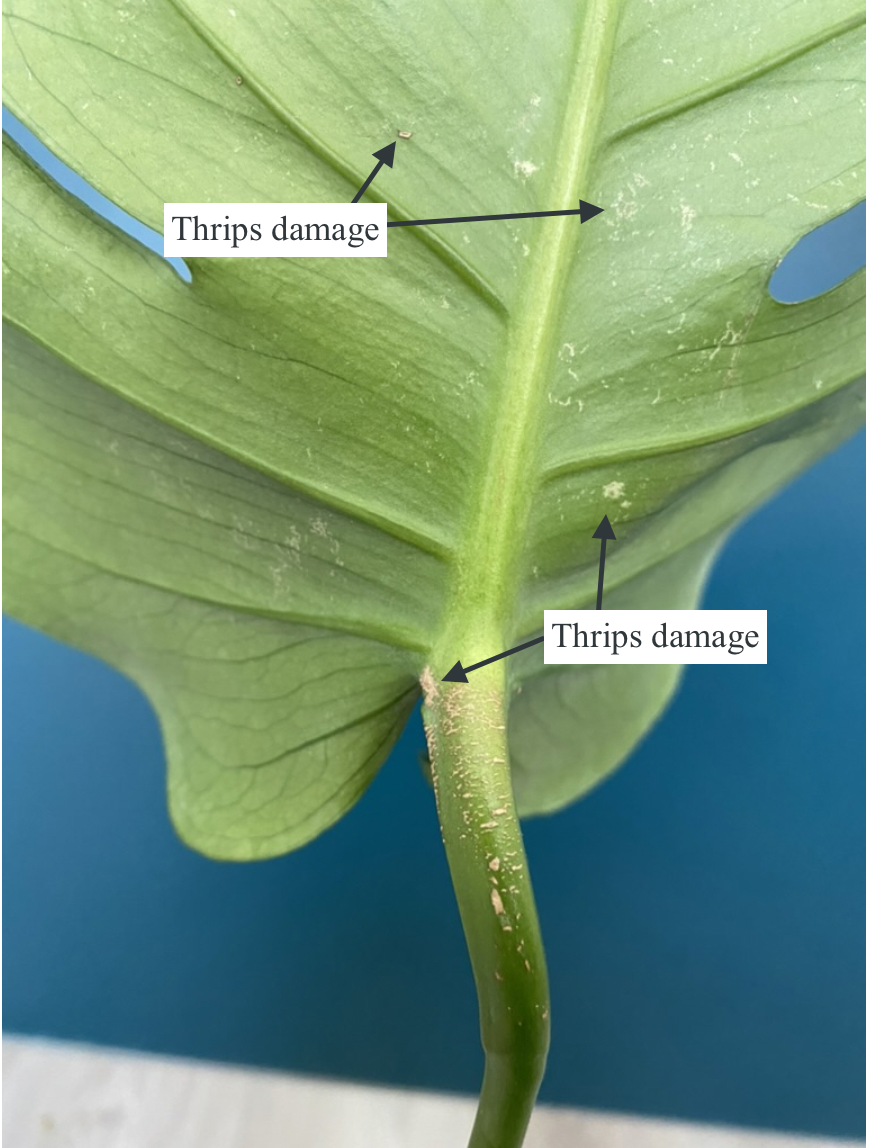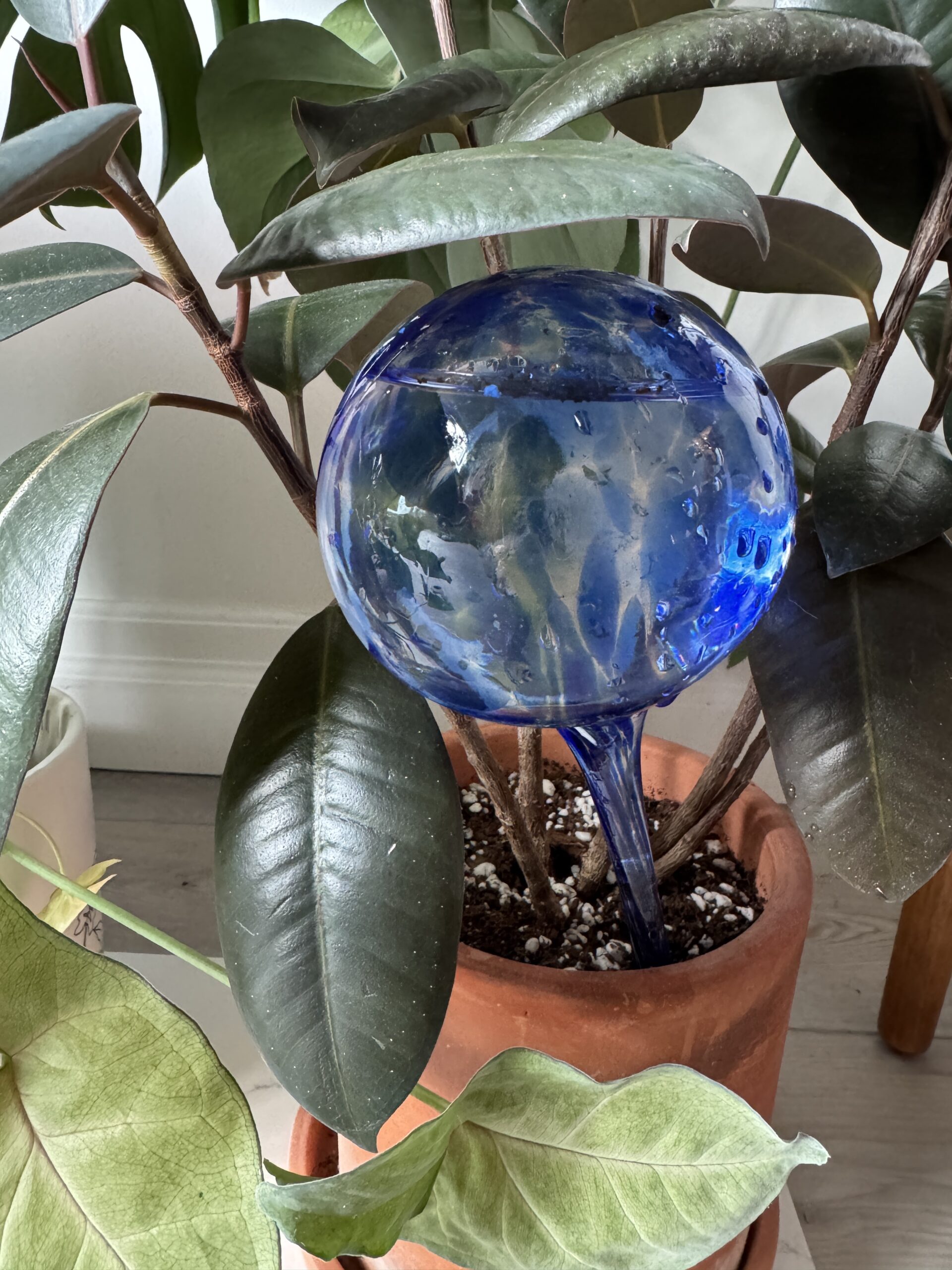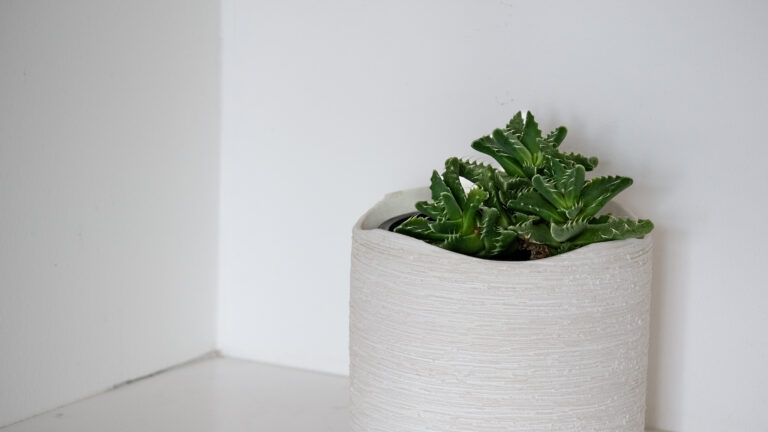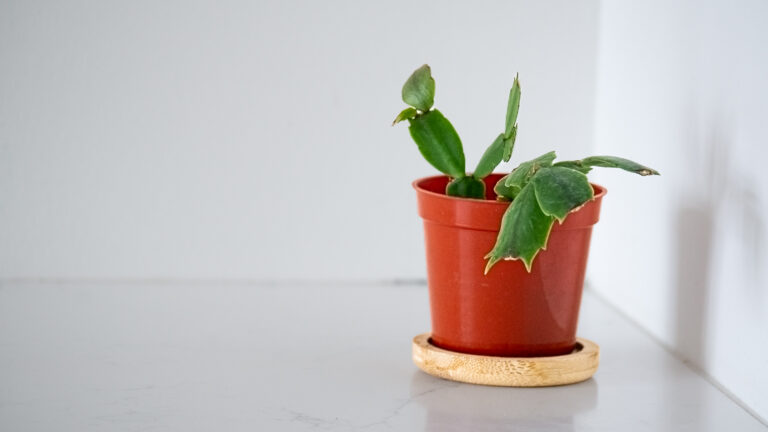Spider Mites horrify me. Partially because I am afraid of spiders.
I’ve never had an infestation as bad as my most recent infestation, but it can happen quickly due to their quick reproduction rate.
I just looked at my Tiger Jaws Succulent one day, and the next, it has a very visible infestation.
But the good news is they are easy to get rid of!
What Are Spider Mites?
Spider Mites are arachnids that look like tiny, brown, fast moving bugs to the naked eye. When you zoom in, you can tell that they look kind of like a spider or a tick.
Spider Mites feed on plants by puncturing the plant’s cells in the leaves and sucking out the nutrients. This can cause damage to leaves, stunted growth, distorted leaves, and eventually death.
Plants need nutrients to survive, so if a pest sucks out all of the nutrients from the plant, then the plant likely won’t survive.
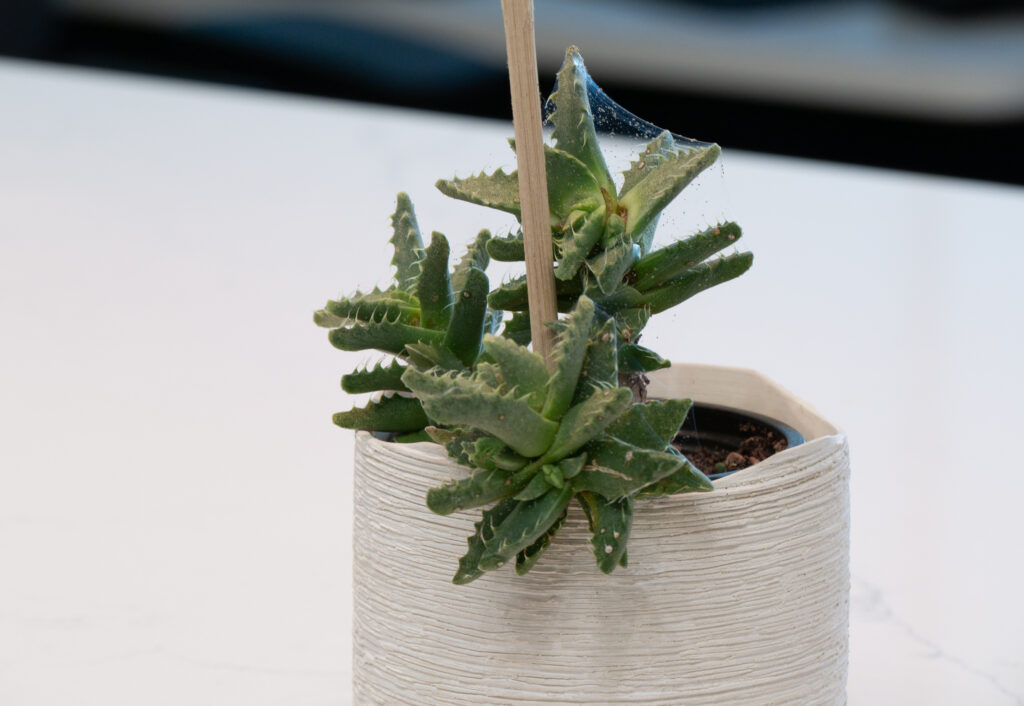
Why Are Spider Mites So Hard To Get Rid Of?
1. Spider Mites can be challenging to spot.
They like to hide on the underside of leaves, in hard to see spots. Think about a regular spider and how the types of environments they like to weave their webs.
Similar is true to the Spider Mite. They seem to really love my Tiger Jaws Succulent, which makes sense when you look at it. It is perfect for the them to web in-between the compact, triangular foliage.
They are also so small (1/50 of an inch) that they often look like a speck of dirt, but a speck of dirt that is moving really really fast.
It’s easier to spot their webs, as you can see in the video below.
2. Reproduction Cycle.
Like thrips, Spider Mites also have a wild reproduction cycle.
They can grow from egg to adult in five days. Adults can lay up to 20 eggs at a time, which is why you can go from 0 to infestation very quickly.
The average lifespan is 30 days, and they can produce up to 100 eggs at a time.
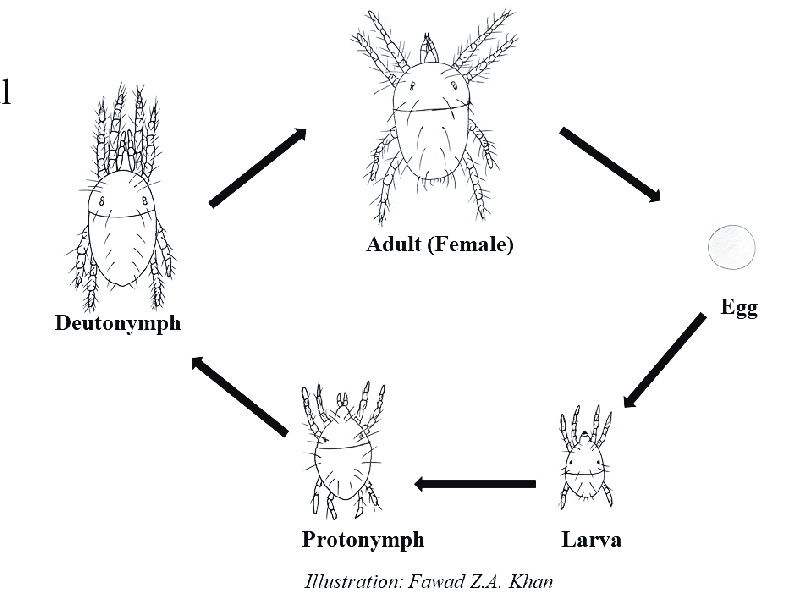
3. Some Spider Mites have genetically modified and are resistant to pesticides/insecticides
With repeated use of the same type or class of pesticide, it will no longer be as effective on Spider Mites populations due to how quickly they adapt. For this reason (among others) I use a homemade insecticide (see step three under “My Method” below).
How Do I Know If I Have Spider Mites?
- You see webbing on your plant. This likely means you have Spider Mites (unless you see a regular household spider around there).
- Rusty looking spots or yellowing foliage. Eventually the foliage will just shrivel up and fall off. If you don’t stop this pest early enough, this can happen to your whole plant pretty quickly.
- You see a lot of tiny specks moving on your plant.
- Your plant is in a dry, warm place. Maybe you also forgot to water it, and the soil is dry. Dry soil attracts this pest.
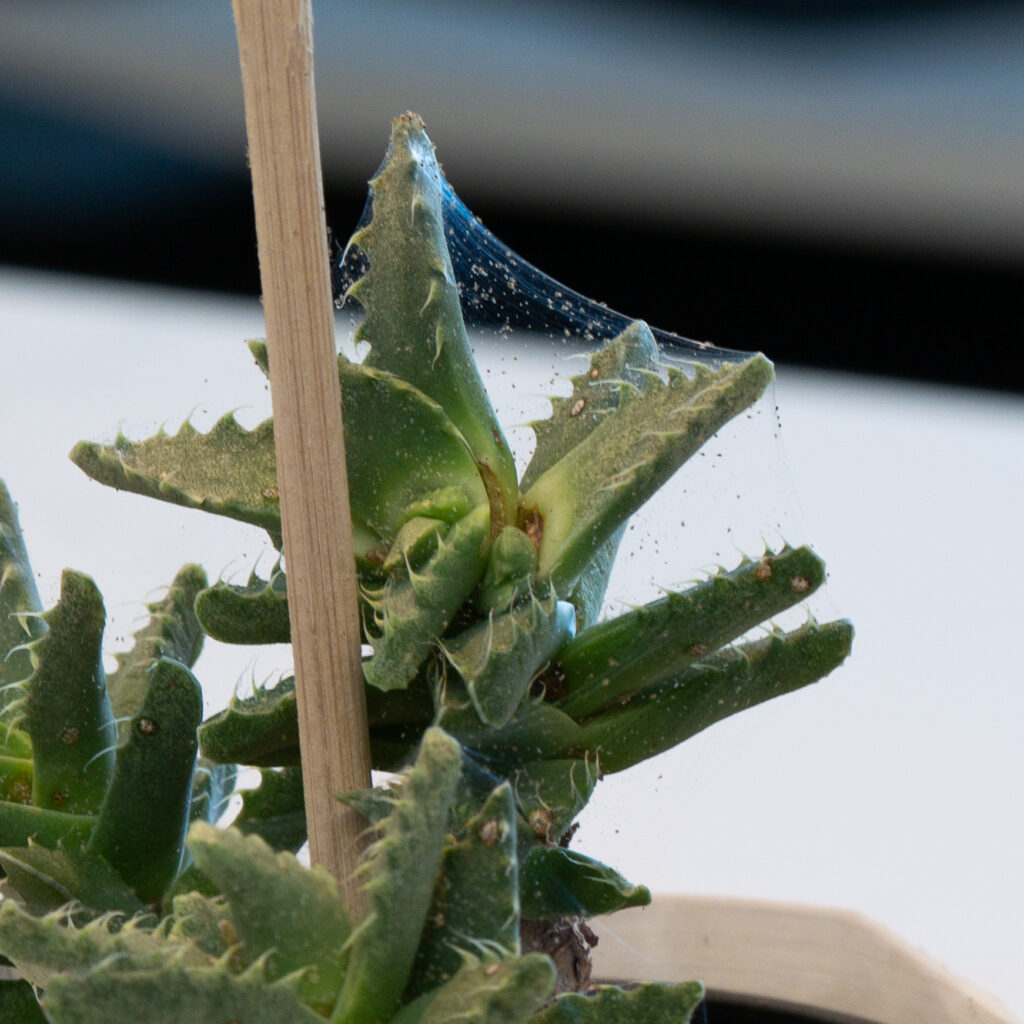
How Do I Get Rid Of Spider Mites?
There are many ways to get rid of Spider Mites. I am going to go over the method I use to get rid of this pest, followed by some other techniques you can try.
My Method:
- Inspect the leaves for any sign of Spider Mites. If the infestation is severe, you will see webbing and a lot of tiny arachnids. In this case, grab your plant immediately and take it to the sink.
- Shower the plant. I put my plant in the sink, and use the spray nozzle to blast the webs and the spider mites off. Repeat this until you can’t see any more of the pest.
- Spray the whole plant and the soil with homemade pesticide (1 spray bottle, 1 tbsp dish soap—not dish detergent, filtered water, 1 tsp neem oil) and leave it on the leaves for 20 minutes. If you leave the spray on too long, it can create a fungal situation.
- After 20 minutes is up, I wipe any remaining spray off of the leaves. For certain plants like succulents or cacti, this may not be possible. If it is sever you will have to strike a balance between spraying your plant and letting the Spider Mites reproduce.
- I suggest checking your plant daily and repeating these steps as required. It’s recommended to do it every 3 days (if you catch it early). If you have an infestation, I would check it multiple times a day and spray any Spider Mites you see.
- If there are any damaged leaves, I remove them after the infestation is eradicated.
Other Steps You Can Take
- Sticky Traps: Yellow sticky traps inserted into the soil can trap pests and hopefully reduce reproduction.
- Manufactured insecticides: As I mentioned earlier, this pest can become resistant to insecticides. However, you can use manufactured insecticides instead of the homemade pesticide I mentioned earlier. Just follow the instructions on the bottle for effectiveness.
- Repot Your Plant with Clean Soil: If there are any in the soil, then you know you can repot your plant.
- Throw Out Your Plant: If the infestation is really bad, you might want to just throw out your plant. I know it sucks, but its not worth an infestation for your other plants.
How Can I Prevent Spider Mites?
- Wipe your leaves. On a weekly to bi-weekly basis, I wipe the leaves of my plants with the homemade pesticide (neem oil spray) I mentioned earlier. For succulents and cacti, spray the plant in the sink once a month to blast any dust or pets from your plant. Don’t forget the underside of the plant!
- Quarantine new plants away from your other plants. Spider Mites can make their way into your home on new plants. Keep new plants away from your plant collection in case its This includes flowers.
I hope this guide was helpful for you. I wish you well on your Spider Mites eradication.

